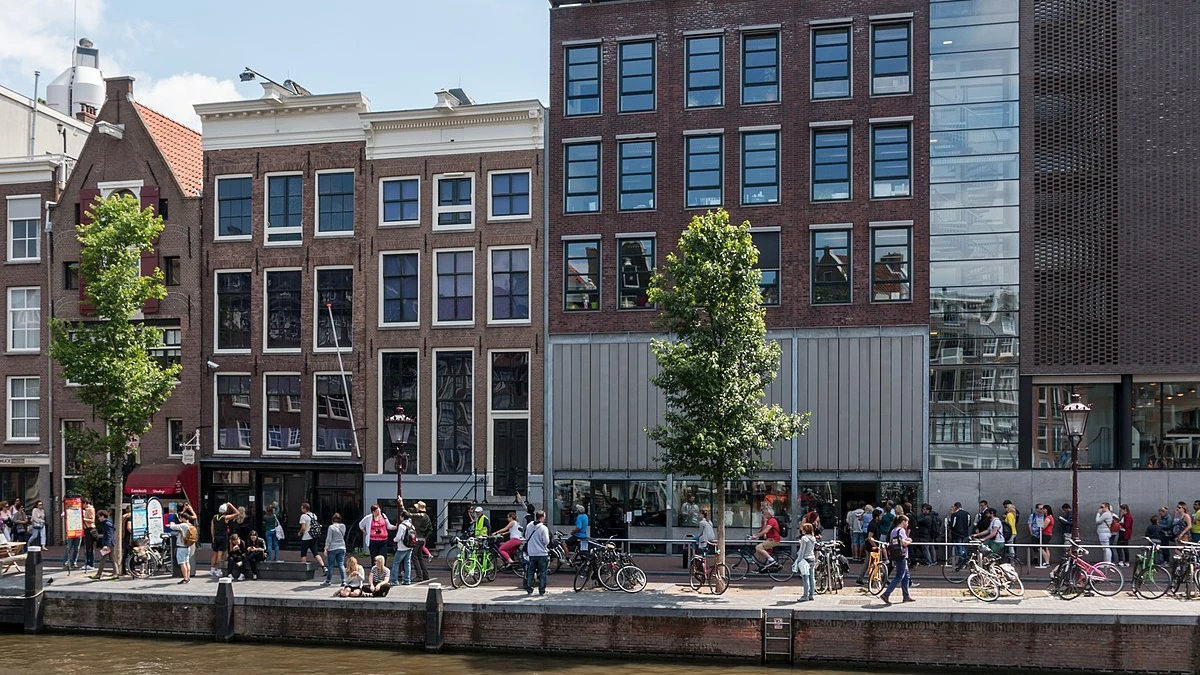Amsterdam Attractions

The Anne Frank House in Amsterdam is not just a museum but a memorial filled with the emotions and hope of a simple Jewish family who dreamed a life of freedom.
A building that was planned to be demolished was saved and later preserved to be a place for remembrance of the Holocaust.
Here is a list of things to see and know during your visit to the Anne Frank House.
Top Anne Frank House Tickets
# Anne Frank House Tickets
# Guided Walking Tour around the Jewish Quarter
Table of Contents
The Diary of a Young Girl—the story of Anne Frank House
The attraction gained popularity after her father, Otto Frank, published the Diary of Anne Frank.
Having a general idea of the contents of this book would be of great advantage when you visit this house.
In this place, you can witness the setting from where Anne penned her daily entries.
Every detail about the secret annex, her family, and the people with whom she shared her space enhances the visitors’ engagement and emotional experience.
You can read quotes from her diary posted on the walls as you move through the house.
Book your tickets to learn more about the effects of World War II in Amsterdam through Anne Frank’s life.
Haven’t read Anne Frank’s Diary yet? Get it on Amazon
Anne’s red checked diary

The Diary of Anne Frank is kept in the Diary room of the Anne Frank Museum inside a well-protected glass case.
Did you know that Anne wrote two versions of this diary?
She made a second copy of this diary with some additions and deletions for handing it to the Dutch government.
Anne not only wrote this one diary but also had a collection of tales and a book of quotes.
It is sad that such an intelligent and eloquent young girl did not live to see her dream of becoming a writer come true.
The secret annex stays the same

One of the many reasons for turning this building into a biographical museum is to preserve the “secret annex” that housed eight Jewish members from persecution.
This secret annex is located on the topmost floor of a warehouse that was used for the business (Opekta) run by Otto Frank.
They entered the secret annex on 6 July 1942 and stayed for 25 months in hiding before their discovery and arrest on the 761st day, followed by a deportation.
Otto Frank returned to the annex after the war only to find an empty space.
He wished to preserve the secret annex exactly as it was abandoned, and to this day, it remains unchanged as per his wishes.
Opekta was a pectin and spice company based in Germany, and Anne’s father was the managing director of its Dutch operations.
Learn about Anne Frank’s life when she was in hiding by stepping into the Anne Frank House or taking the Anne Frank House VR tour.
Life inside the secret annex
There are strict rules followed inside the hiding place to be as discreet as possible and prevent suspicion.
Since the pipes run directly through the warehouse below, wash basins and toilets should only be used at a certain time.
The attic is the only place where Anne gets to see the world outside since other windows of the secret annex stay blacked out for safety.
Watch out for the height marks of Anne and Margot in Otto Frank’s room along with the map of Normandy stuck to the wall with pins to mark the progression of the war.
Peter Van Pels’ – another member of the secret annex – stock exchange game is preserved at this attraction.
Book this guided walking tour around the Jewish Quarter and learn more about the life of Anne Frank with visits to the Jewish Historical Museum, the Portuguese Synagogue, and the Auschwitz Monument included.
Discovery and arrest
The members of the secret annex were discovered on 4 August 1944 during a house raid by a group of police who stormed into the annex behind the movable bookcase.
It is believed that the arrest was made based on anonymous information about the secret annex.
After the members were moved out, Anne’s diary and other writings were found scattered on the floor. Luckily, a helper managed to save them and hand them over to Otto.
Otto Frank is the only survivor of the eight members. As per his daughter’s last wish, he transcribed his daughter’s work and published it.
